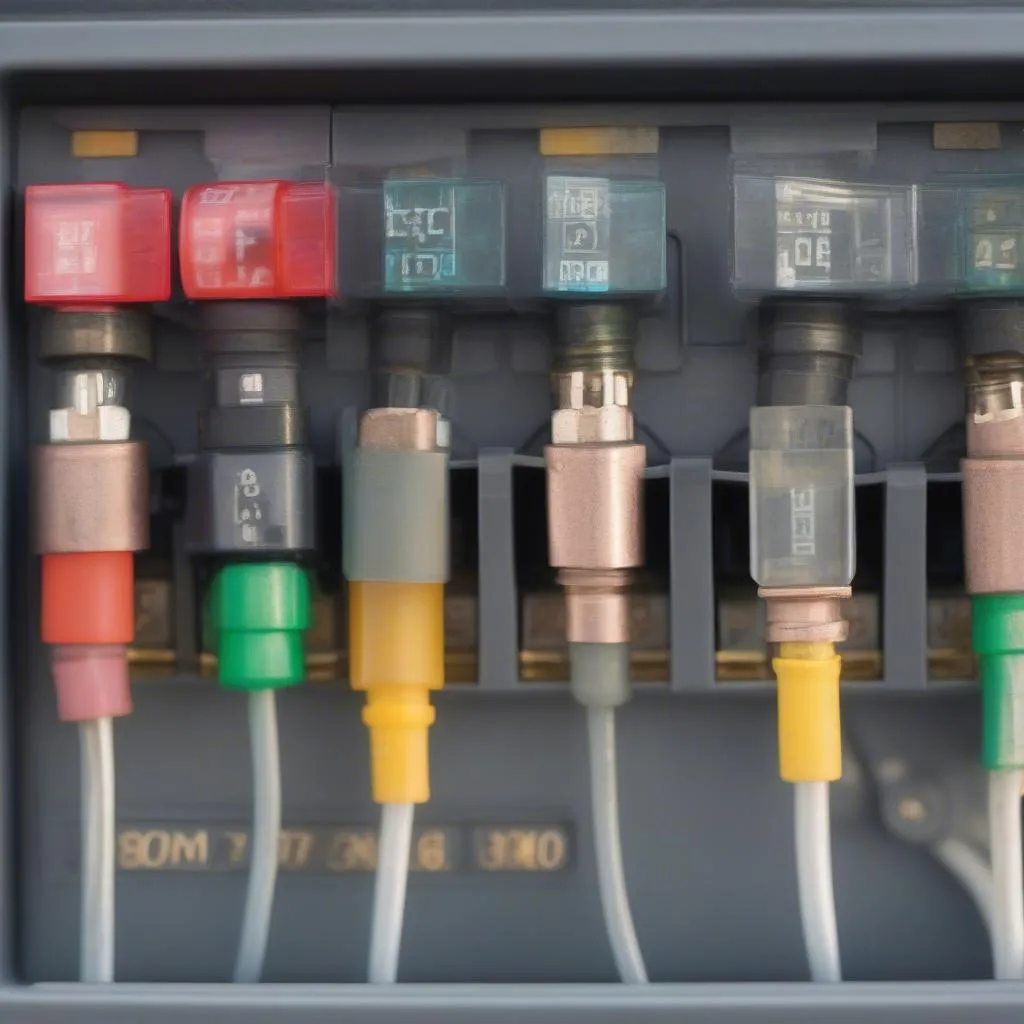A malfunctioning anti-theft system in your GM vehicle can be a major headache. From preventing your engine from starting to draining your battery, it’s a problem that needs immediate attention. While seeking professional help is always recommended, there are times when you might need a quick fix or want to understand the process better. This comprehensive guide will walk you through the possible causes, symptoms, and solutions to disarm your GM anti-theft system.
Understanding Your GM Anti-Theft System
Before we delve into the how-to’s, it’s crucial to understand what we’re dealing with. GM vehicles, like many others, are equipped with an immobilizer system as part of their anti-theft technology. This system, when functioning correctly, prevents the engine from starting without the presence of the correct key. It does this by using a transponder chip in your key that communicates with the vehicle’s immobilizer module.
“Think of your car key as a secret handshake with your car. The wrong handshake, and the car won’t budge,” explains automotive electronics expert, Dr. Emily Carter, author of “Automotive Electronics Demystified.”
Common Reasons Your Anti-Theft System Needs Disarming
The GM anti-theft system, like any electronic system, can experience glitches. Here are some common culprits:
- Weak Car Battery: A low battery can disrupt the communication between your key and the immobilizer module, triggering the anti-theft system.
- Faulty Key Fob: If the battery in your key fob is dead or the transponder chip is damaged, your vehicle might not recognize the key, leading to an immobilization issue.
- Malfunctioning Ignition Switch: A faulty ignition switch can disrupt the signal from your key to the immobilizer system, leading to starting problems.
Recognizing the Signs: Is Your Anti-Theft System the Issue?
How can you tell if a rogue anti-theft system is the reason behind your car troubles? Keep an eye out for these telltale signs:
- Security Light: A flashing or illuminated security light on your dashboard is a primary indicator of a potential issue with your anti-theft system.
- Engine Cranking but Not Starting: If you hear the engine turning over but it fails to fire up, it might be a sign that the immobilizer is preventing the engine from starting.
- Clicking Sounds: Rapid clicking noises coming from the starter motor while trying to start the car could suggest a problem with the immobilizer system or the related wiring.
What You’ll Need
Disarming a GM anti-theft system often involves addressing the root cause. Here’s a basic list of items that might be helpful:
- Spare Car Key: Attempting to start your vehicle with a spare key is a simple first step to rule out key-related issues.
- Battery Charger/Jumper Cables: If a weak battery is suspected, having a charger or jumper cables on hand is essential.
How to Disarm Your GM Anti-Theft System
It’s important to note that the following steps are general guidelines. Specific procedures may vary slightly depending on the year, make, and model of your GM vehicle. Always consult your owner’s manual for precise instructions.
1. Check Your Battery: The first and often the easiest fix is to ensure your battery is charged. A weak battery can cause all sorts of electrical gremlins, including triggering the anti-theft system. If you suspect a low battery, try jump-starting your car.
2. Test Your Key Fob: Try starting your car with your spare key. If the car starts, the issue might be with your primary key fob’s battery or the transponder chip.
3. The 30-Minute Method: For some GM models, you can try this method:
- Turn the ignition to the “On” position (don’t start the engine).
- Leave it in the “On” position for about 30 minutes or until the security light turns off.
- Turn the ignition off and wait a few seconds.
- Try starting your vehicle.
4. Seek Professional Assistance: If none of the above steps work, it’s time to contact a qualified mechanic or an automotive locksmith. They have the diagnostic tools and expertise to pinpoint and resolve more complex issues with your GM anti-theft system.
FAQs: Disarming Your GM Anti-Theft System
Q: Can I disable my GM anti-theft system permanently?
While it’s technically possible, it’s not recommended. Disabling your anti-theft system makes your vehicle more vulnerable to theft and can void certain warranties.
Q: I had my key fob battery replaced, but the car still won’t start. What could be wrong?
Even with a new battery, the key fob itself could be faulty. The transponder chip might be damaged or the key fob might need to be reprogrammed to your vehicle. A qualified locksmith or dealership can help with this.
Q: How much does it cost to fix a GM anti-theft system issue?
The cost can vary significantly depending on the exact problem, labor costs, and your location. Simple fixes like battery replacement might cost less than $100, while more complex issues requiring module replacement could cost several hundred dollars.
Q: Can I use an OBD2 scanner to diagnose my GM anti-theft system?
Yes, a compatible OBD2 scanner, like the ones available on Cardiagtech, can read the codes stored in your vehicle’s computer, including those related to the anti-theft system. This can help pinpoint the root cause of the problem.
Need More Help?
Dealing with a faulty anti-theft system can be frustrating. Remember, while this guide provides general advice, the specific solutions may differ based on your car’s model and year. If you need further assistance diagnosing or fixing your car troubles, consider exploring the range of diagnostic tools and resources offered by Cardiagtech.
And if you’re looking for expert guidance, don’t hesitate to contact CARDIAGTECH. Their team of automotive experts can provide you with personalized solutions and support for all your car’s electronic and diagnostic needs.


